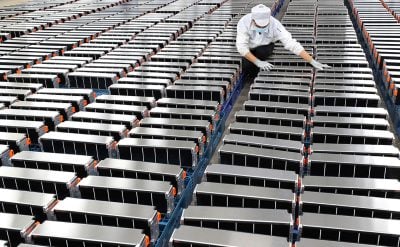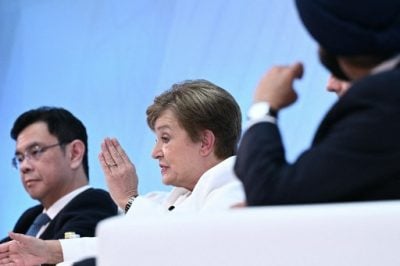The government’s decision to deploy billions of rand to provide jobs for unemployed youth has led to bitter street battles between Cosatu, the national trade union and the opposition Democratic Alliance with Cosatu, surprisingly against the proposal.
History of dubious merit was made in Johannesburg on mid-May when a march led by opposition Democratic Alliance (DA) leader Helen Zille and MP Lindiwe Mazibuko escalated into a violent street fight after members of labour conglomerate Cosatu, wielding sticks blocked the marchers’ way before pelting them with bricks and stones.
The DA protesters returned the missiles and fortunately nobody was killed although blood on both sides flowed freely. The melee was made newsworthy by the fact that the DA, more noted for making a noise in Parliament than on the streets, was at the centre of the ruckus.
Last year, Finance Minister Pravin Gordhan proposed a R5bn ($650m) fund to subsidise youth wages with the intention of making major inroads into youth unemployment, especially in manufacturing where it was most felt.
The opposition DA and most of the business sector were strongly behind the idea. The unions, however, opposed the scheme. The gloves came off and differences were aired in ways that were ugly and unprecedented.
Seeding the furore was the government’s reticence in deploying the programme even though it had been agreed by the Cabinet and funds made available. The measure was primarily aimed at making it more affordable for employers to sign on bigger staff complements.
The DA charged that the programme was being bogged down by the interference of Cosatu, a member of the ruling tripartite alliance with the ANC and the South African Communist Party. Indeed, Cosatu is dead set against the subsidy, and deeply resented the DA’s public demonstration in support of it.
But, of course, there was more to it than simply waving the flag for the disadvantaged young. With an eye on the looming elections, the DA spotted an opportunity to make voter capital out of Cosatu’s recalcitrance.
Partisan politics rule
Comment on South Africa’s new street politics flowed thick and fast. “South Africa’s chronic unemployment crisis is a coming together of diverse and conflicting factors that stifle the economy, cripple production and obstruct employment opportunities,” say Khusela Sangoni and Magdelene Moonsamy in a briefing by the ANC Youth League. “Taken individually they’re bad enough; collectively they’re hugely destructive and seem to defy resolution. Ironically, the ideologies that joined forces to fight the democratic elections in 1994 appear today to be fighting one another, making finding an answer all the more tough.”
Author and commentator Brent Meersman noted,“What the march did was show in bald terms the ugly face of South Africa’s growing political intolerance.” Long pigeonholed as a party for whites, for many black voters the face of the DA was suddenly transformed into a procession of thousands of young, black-skinned South Africans wearing the DA’s blue T-shirts. Clearly the confrontation had less to do with labour policy than with partisan politics. For the DA the opportunity arose to show the millions of unemployed youth, a vast reservoir of new and first-time voters, that Cosatu cared more for its existing members than for the sea of unemployed it was trying to exclude from a pay cheque by violently opposing the youth employment subsidy. “No one can say for sure if the youth wage subsidy will work, but this is no way to counter the argument,” maintains Meersman. “It lends weight to the belief that the dispute is about partisan politics and has little to do with rationale.” Joel Netshitenzhe, an ANC National Executive Committee member, sees the confrontation as democracy at work in a transforming nation. “That South Africa is a noisy republic is a trait of which we should be proud,” he says. “We are truly given to hyperbole. However, the alignment of forces in the debate about a youth wage subsidy is indeed a strange one. Government put forward the proposal and, after some eight years of internal debate, resources were allocated for its implementation. The National Planning Commission has similarly called for a tax subsidy to employers to reduce the initial cost of hiring young labour market entrants”.
Glorified slaves?
On the surface, the young workers’ wage subsidy would seem a welcome intervention to get first-time employees into jobs by making their pay packets less onerous in hard economic times for the job market.
The labour unions and their ally, the ANC Youth League (ANCYL), see it differently. “Instead of decisively dealing with the challenge, the proposal could turn young people into glorified slaves of companies in the interest of expanding profits,” avers ANCYL National Executive Committee member Thabo Kupa.
In the DA’s view, the youth wage subsidy will lower the effective cost of employment and create thousands of jobs without an adjustment of wages or conditions of employment. This opinion is shared, ironically, by the ANC.
Kupa disputes the DA stance saying the subsidy is open to nefarious manipulation. “Employers can continue rotating workers thus gaining from the subsidy without ever fully employing the workers. In the process employers can justify low wages. The fact is there is no security for the jobs to be created by the youth wage subsidy after the expiry of the subsidy period.”
Opponents of the measure point out that the subsidy scheme could become a minefield of manipulation.
Deadweight loss – employers will take advantage of the subsidy but employ people who would have been employed anyway.
Substitution effect – employers will absorb subsidised young people and get rid of unsubsidised, and mostly older workers.
Displacement effects – firms and industries without subsidised workers will be crowded out and general employment negatively affected.
Destructive churning – companies will take a group of subsidised workers and when the subsidy period for these comes to an end, they will simply replace them with new ones.
Corruption – the system lends itself to graft on a mass scale.
The DA, the official opposition and second-biggest party, although still a long way behind political juggernaut ANC, wants drastic measures to confront joblessness and insists wage subsidy must be one of them. They’re also prepared to endure the sticks and stones of street battles to get their way. The first lines of a new chapter in South African economic-political engagement have been written and they have moved the debate from the chamber to the streets. As to what happens from here on, South Africans of every persuasion can only wonder.
Want to continue reading? Subscribe today.
You've read all your free articles for this month! Subscribe now to enjoy full access to our content.
Digital Monthly
£8.00 / month
Receive full unlimited access to our articles, opinions, podcasts and more.
Digital Yearly
£70.00 / year
Our best value offer - save £26 and gain access to all of our digital content for an entire year!
 Sign in with Google
Sign in with Google 


